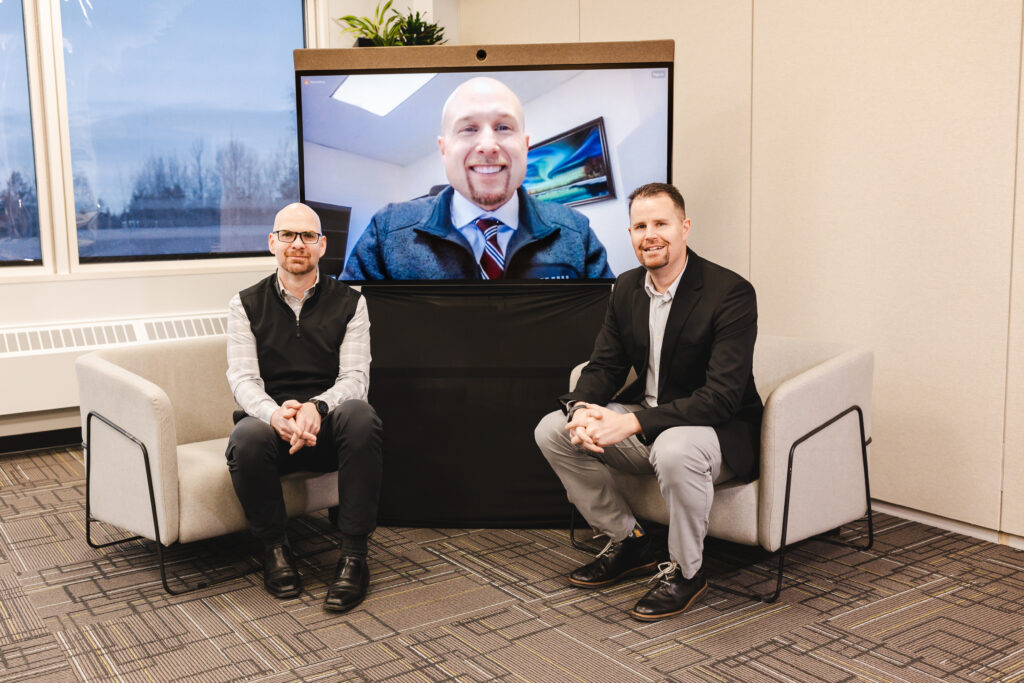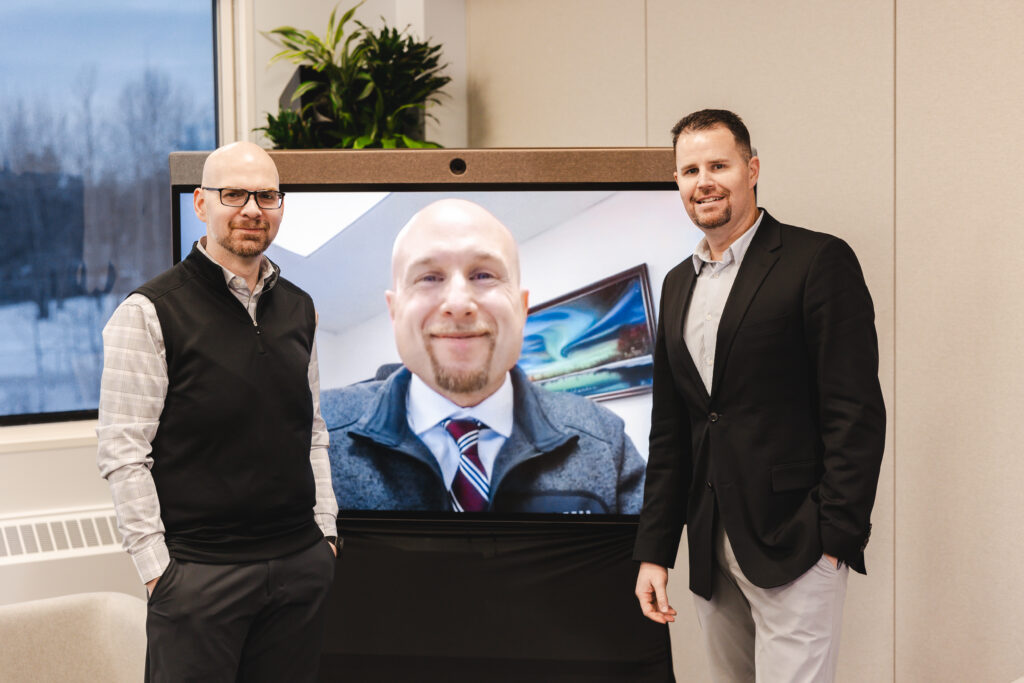This is the second installment of a two-part blog series. Read part one, here.
Reliable connectivity can be a game changer when it comes to education, especially in rural Alaska. Senior Director of GCI Education, Jason Tomberlin, recently met with Jason R. Johnson, Galena City School District Superintendent and Heath Day, GCSD Director of Talent Relations & Recruitment to discuss how their district uses technology and the opportunities it brings to its educators and students.

How does your network’s performance influence your ability to implement future technologies and educational opportunities?
Johnson: I think that’s the great unknown, what is coming up in the future and what will that open for our students and our staff? We think increased internet and increased bandwidth and capacity will open educational opportunities far outside of the United States. We’re looking to see what the future will hold for technology, but we know that to get there we’re going to have to have that reliable internet to do it.
Where do you see GCSD in the next five years, and what role does technology play?
Johnson: I see our district being a leader in academic achievement in the state of Alaska. We are progressing that way very quickly. We’ve really emphasized the importance of literacy and workforce development initiatives in the district.
The future of our district, I hope, is ensuring that Alaska has a strong workforce. That’s what we’re gearing toward. We need highly educated technology professionals. We need highly educated workers on the slope, Tribal government leaders, state leadership. And I hope that Galena can be a part of that solution for the state, rather than relying on the Lower 48 to fulfill most of our critical jobs.
Tomberlin: I want to highlight your Interior Learning Academy campus. You guys do some incredible things there, bringing education to kids. Do you see that being a larger part of your vision for the district in the future?
Johnson: Certainly. We’re looking to expand our opportunities for all our students. We look forward to building a hospitality pathway. At GILA (Galena Interior Learning Academy), knowing that a large section of the state’s revenue comes through tourism, we think there’s a great opportunity for our students to immerse themselves in that field.
We also fully expect to have our aviation program soaring at the start of next year. And the beautiful thing about that is we could see a student’s interest as a freshman and in their senior year, they could fly a plane on our airway and then land it by themselves. And that would be a beautiful thing.
We know that there’s a massive pilot shortage in the state. And that’s really exacerbated in rural Alaska. I think we can be a solution for that as well.

Building internet networks for rural Alaska schools
How has your network affected the communication and collaboration and synergies between GCSD and IDEA schools?
Johnson: We use primarily face-to-face interaction like video calls or email communication. So, our network is vital. It’s paramount to our success as a district. We would not operate very well or at all without strong internet connectivity and that type of performance. Especially with IDEA, the majority of our communication with our parents is virtual. It is vital to the students’ education that our things work when they’re supposed to work.
Are the homes in your community equipped with internet access, allowing school-aged children to access school content, watch videos, and participate in video calls?
Johnson: Within IDEA, a lot of our families would be equipped, but there are also families that homestead or live far off the network or grid that do not have any connectivity.
Locally within Galena, we do have several homes that do not have internet access and do not have the type of connectivity that they need. Anything we can do to help those families acquire that type of access is important to the student and that family.
Can you talk a little bit about the role your network and the access to the internet plays in preserving and promoting native culture and language?
Johnson: Yeah, that’s an amazing question. We’re really excited about it. A lot of our students come from Western Alaska, and we’re going to have a virtual Yupik instruction course starting in the fall. We found an instructor within Alaska who is willing, as a language expert, to share that with our students.
We have almost 60% of our student body at this point excited about taking that language course. I would say the network is paramount to the success of helping preserve that language the best that we can. The class will be done primarily through Microsoft Teams and then that instructor will fly up once a quarter to spend time on site and do after-school workshops with the kids. But a lot of that communication and that ongoing dialogue will take place over the internet.
And I think culture is just a really interesting word. And what’s unique about Galena is that we have several different cultures that we celebrate and several different cultures that we serve.
We have, again, students from the North Slope to the Aleutians. We have offices from Fairbanks to Juneau. We have our own culture here in our local community. Our service and internet are vital to each culture uniquely, because they all are unique and we celebrate them differently across the board.
How does a high-performance network support your educational goals and learning outcomes?
Johnson: It’s paramount to learning outcomes for students. We really believe in direct instruction, but with our remote location here, our students don’t have access to things that a lot of students would in the Lower 48, or in some of the larger communities in Alaska.
It allows us to show our students what careers look like in different areas of the state, what types of sciences exist in some of the university settings. Without a strong performing network, I think our kids would be very behind where they should be as far as access to opportunity compared to other districts.
Day: Can you speak to the dynamics of the boarding school? You have kids from various communities across the state, and they are regularly interacting and taking classes with the kids from the community of Galena. What is that dynamic of being connected, but then going back to their respective villages? How does that piece play out over the course of time?
Johnson: Yeah, one of the unique things about the Learning Academy is that students who would never have crossed paths, they form relationships and connections that span the state of Alaska, which is incredible. A lot of our students graduate and keep lifelong friends. And what we’re seeing happen now is some of those connections are turning into career opportunities for kids, which I think is the most powerful. That’s what we want. That relationship they’ve made here in Galena are spanning the test of time for a lot of our students.
We’re seeing former students who own businesses now be references for former students and current students. That is the most powerful thing I think we can do as an institution is set kids up for success post-graduation.
Were there any new or interesting educational opportunities introduced in the past year?
Johnson: We’ve been really blessed with some strong partnerships with our local Tribe and a lot of large entities in the state. We’ve started a program for three-year-old kids. It’s a fully functional early childhood education and development program. We’re really excited about how that’s going to set up all our students in the community for literacy success and success in the school building.
We’ve introduced an after-school acceleration academy. We’re focusing heavily on literacy and math initiatives. Soon we’re going to build in a Lego robotics and a STEM club after school as well to combine with that.
Long term, we’re going to start a hospitality pathway at the Learning Academy. We’re working hard to increase opportunities for advanced placement programs. We want students in the state to be diverse and we want students that can succeed both in the career and technical pathway as well as with AP course options.
We think we can build the whole student here. We want to make sure that if you come here, you can get a collegiate experience. You can get a vocational experience. And you can get both if that’s what you desire. The Learning Academy has been looked at as a vocational only institution, but in the last two years, we’ve been able to add several AP programs, and our last students that tested did very well on the ELA assessment. I think that speaks volumes to what you can do in rural Alaska, and what our kids can do.